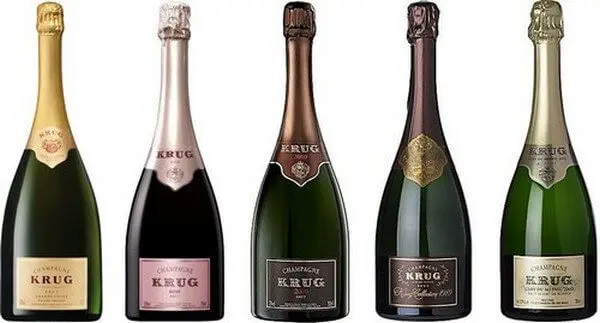Contents
Krug is a French champagne house based in Reims. The company produces high-end products and is owned by the LVMH conglomerate, which brings together high-end brands. The difference between Krug champagne and others lies in the complexity of its manufacture and the long aging period. Wines go on sale only after they have reached full maturity.
Historical information
The history of the wine house Krug is unusual. Its founder, Johann Joseph Krug, is not a Frenchman, but a German by birth. He was born in 1800 to a butcher’s family and grew up in the city of Mainz at a time when Germany was part of the Napoleonic empire. The young man chose a profession far from winemaking for himself – he learned to be an accountant and moved to France, where he could find a well-paid job. Johann Joseph got a job as an accountant in the Jacquesson company, a well-known champagne manufacturer at that time.
The circle quickly made a career and soon became one of the firm’s partners. He traveled a lot around the country, visited vineyards and was actively interested in the blending process. At the age of 40, the entrepreneur met and became friends with Hippolyte de Vivet, a major wine merchant in Reims. The meeting became fateful – in the next three years, the friends were actively working on new blends, which were made from wines from the best Champagne vineyards. In 1843, Krug, with the support of de Vive, opened his own company.
The goal of the winemaker was to create a champagne, the taste of which would not be tied to the year of harvest and seasonal climate changes. Over the following years, he managed to collect the richest collection of wines from the best terroirs of the country. The result of many years of work was the Krug Grande Cuvee champagne, which was considered a model of refined taste.
After the death of the founder, the business passed to his son Paul, who studied business in France and abroad. In the future, the company remained a family business for a long time, until it was bought out by LVMH in 1999. The descendants of the Circle refused to manage, but continued to advise the management and took part in all tastings. In 2009, the representative of the family, Olivier Krug, again became the director of the winery.
Production features
Champagne Krug is made from Chardonnay, Pinot Noir and Pinot Meunier grapes. Harvest is processed already in the first day after harvest. Each batch of pressed juice is vinified separately in small wooden barrels. After the primary fermentation, the company’s specialists conduct tastings, and batches that do not meet the high requirements are rejected.
The fermented juice is then poured into stainless steel vats and aged until spring. After repeated testing, the young wine becomes the basic basis for champagne. In total, the Krug blend includes up to 150 reserve wines from the company’s rich stocks. It takes about 30 weeks from harvest to bottling. Then the champagne is placed in cellars for aging, the maturation period is from 5 to 10 years, depending on the variety.
Interesting Facts
- The founder of the company, Johann-Joseph Krug, believed that the wine house should produce only two types of champagne of the same quality – one annually, and the other only in years of outstanding harvests. Following the new trends in the industry, the descendants of the winemaker went further – in 1975, Krug Rose appeared in the assortment of the wine house, the basis for which was Pinot Noir grapes.
- Own crops make up only 30% of the total amount of raw materials, the rest of the company is supplied by numerous farms that work with the company on a long-term basis. The plant receives grapes from 250 sites in the province of Champagne, selected on a competitive basis.
Types of champagne Krug
Grande Cuvee Round, 12%
The aging period of champagne is at least six years. The golden drink is saturated with fine bubbles. The aroma of wine mixes the smells of quince, dried cherries, spicy honey and candied fruit. On the palate, hints of toasted white bread, fresh apples, marzipan, almonds and sweet spices are revealed. In the aftertaste there are notes of lemon and grapefruit. Suitable with parmesan, truffles, shrimp in batter, oysters, Parma ham and desserts.
Rose Circle, 12%
Pink champagne matures in cellars for five years. The assemblage is created in order to get away from the intense aroma in order to reveal the refined taste as brightly as possible. A drink with a silky texture and a multifaceted bouquet, which contains the entire fruit palette – from wild raspberries to ripe peaches. Piquancy is given by nuances of anise, cumin and roasted almonds. Pairs well with spicy meats, canned and dried peppers, and foie gras.










